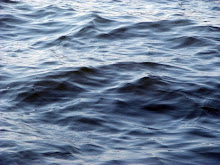
Rosario
submarine depot ship, ex-sloop, Condor-class, was 980t, 1898(l), 6-4in, 13kts, 130 crew. Sold 1921
Nov 1913-Sep 1918, China, Hong Kong

Torch
old sloop, Alert-class, 960t, 1895(c), 6-4in, 13kts, 106 crew. Sold 1920
Mar 1914-Nov 1914, May 1918-Aug 1922, Pacific

Log of Torch

rum-running schooner waiting to load up at Demerara, British Guiana during US prohibition 1924
(Yeoman of Signals George Smith)
Logs courtesy Old Weather
Images courtesy NAVAL-HISTORY.NET 1998-2010
working with National Maritime Museum & Citizen Science Alliance/University of Oxford
Here is a very engaging project which is truly interactive internet at it's best. A project which will appeal to all generations, from the youngest, greenest (climate change) activist to the older veterans of the wars and all in between, a unifying force for collaboration. And a chance to easily make a contribution to and participate in scientific research which can help us understand where we stand in terms of climate change and inform our future. And it's fun. Here's what you can do, anyone can do. Go to the Old Weather website, read the intro, review a couple of the tutorials and get to work. You'll pick a vessel of your choice and join a crew of other folks working on the same boat. Your task will be to log some entries into the database by viewing the actual log entry of your chosen ship. The entries will pertain to the location of the vessel, the weather entries of the day, and the log of events aboard ship for any given day, which can range from tedious to exhilarating. Tis a cool magnifying glass thingie which will help you read the entries. And it all goes to helping science understand where we are in terms of the geologically recent past, in order to grasp weather changes over the last century. to wit:
Introduction:
Help scientists recover worldwide weather observations made by Royal Navy ships around the time of World War I. These transcriptions will contribute to climate model projections and improve a database of weather extremes. Historians will use your work to track past ship movements and the stories of the people on board.
There are links to photos and a synopsis of each vessel's history. This is a well conceived and executed project, a joint effort of several UK institutions. An example of interdisciplinary sharing, and an engaging of the public to share in the grunt work of scientific research that should and hopefully will be taken note of. This works, and in my opinion, it rocks.
Take the data from these ships and the history from these ships, engaged in warfare, and, turning swords into plowshares, help the understanding of climate change and help tell their stories. This is redemption in action. Turning weapons into data into understanding into prediction ( I guess) and into action (I hope).











































2.JPG)




















